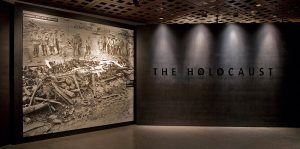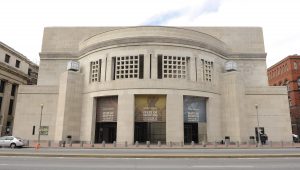Sarah DeLena
Digital Humanities – Reflection
Kevin Rutherford
4/26/18
In order to make “One Student, One Fire,” Barbara, myself, and Megan had to brainstorm a basic premise for the game. We already knew it was a text-based adventure, so all that was left was to make a character and a goal. The most exciting topic we’ve covered in Digital Humanities so far was the Cortland 1919 Fire at the Cortland Normal School, so we thought that would be the best topic to make a game out of. Originally, we wanted to do a “Whodunit” type game where the player had to figure out who started the fire, but that seemed to be a common idea in the class, so we scrapped it. Instead, we thought of a new premise — the idea that the player was a student at the school and before he left the building during the fire, he wanted to save some archives from the library. This idea came to our group as we thought about our history-exhibit projects and we remembered that the students and teachers had actually gone back into the burning building to save archives, all in order to save some of the school’s history. So with this idea, we crafted the main character, Derrick, who is a student at the school and is the player, in a second-person narrative.
We started to make the story in a shared google doc, each writing a few lines and then possible options for the player to take, numbered 1 and 2. Depending on what the player chose, we wrote separate storylines to follow those choices, but this method of writing got messy really quickly. We realized that this game could take forever to create if we did so many possible options, so we narrowed the general story into two sects: if the player decides to follow the mysterious man or if they don’t. The stories do come together at a point, though, when Derrick is given the option to go to the archives in both storylines, but the player needs to choose a lot of right answers to get there in the scenarios.
All of our mangled options and storylines really came together when they were put into Twine. Twine helped organize the options and eased the task of making the story coherent and gave it the ability to flow nicely. Once we saw that options could be repeated and dead ends could exist naturally, the story worked itself out very well. The option to play the game on Twine was awesome too — I think if we weren’t able to play it dozens of times, we wouldn’t have been able to see continuity errors or plot holes (which there was an abundance of). The issue of using an option over again was also important to see in playthroughs — sometimes if we included the same option again, the narrative didn’t make sense because the original passage that option was connected to was worded differently — so we had to make options that were worded just right or else we had to make entirely new options for the player. All in all, “One Student, One Fire” was a pretty easy game to create using Twine and collaborating on google docs. When it came to creation, it worked well that we all put plot points and narrative pieces in the google doc, and then I personally put it into Twine, since you can’t share the Twine page until it’s published.
When I think of the word humanities, I think of literature, poetry, rhetoricians, and literary scholars, which seem hard to connect to games. Through this project, that difficulty of connecting humanities to games disappeared, especially because of the type of game we made (a narrative-based adventure). The game was filled with literature; it had a plot line, a narrative, characters, and more, and it was so heavily depended on the words for the game itself (no imagery), that humanities and the game couldn’t be anything but directly connected. So, technically speaking, with this opinion of how games and humanities are connected, I guess the work I did was humanistic work. It depends on how you characterize and define both games and humanities, but with my definition and associations, I definitely did add something to humanities with this game. I think the only kind of games that I would not define as humanistic would be games without any type of narrative or plot. It wouldn’t necessarily need any text, but as long as there’s a story, it’s humanistic — for example, no, I don’t think “Tetris” would be a qualified enough game.





